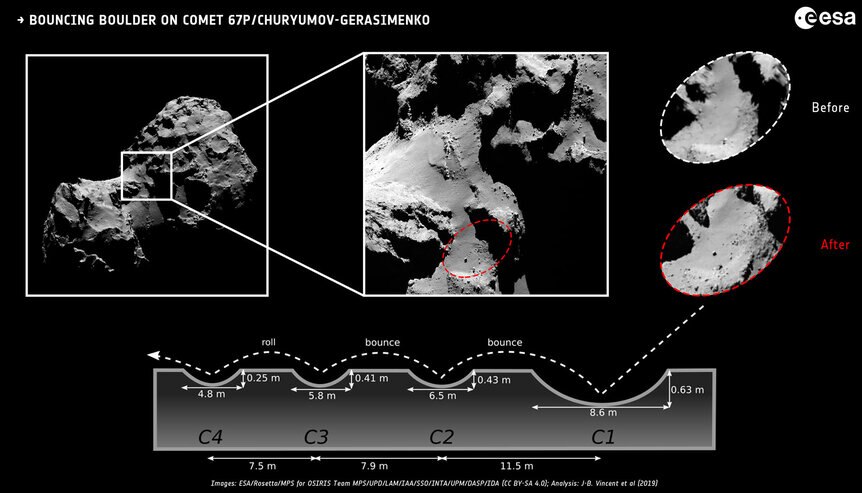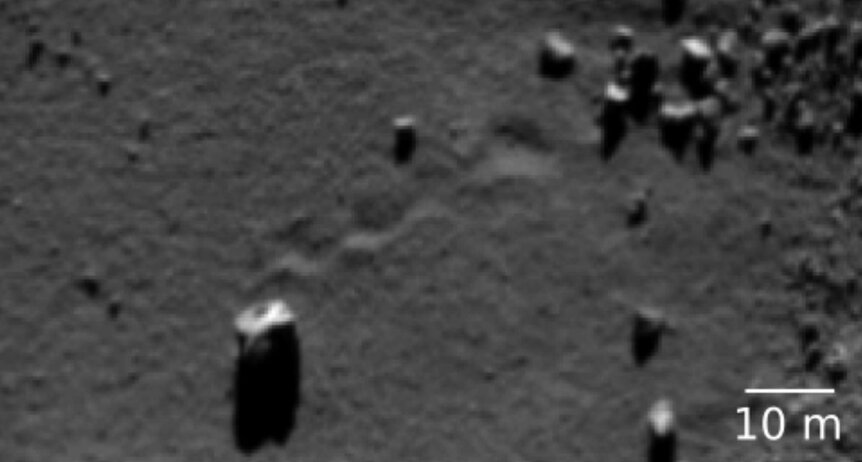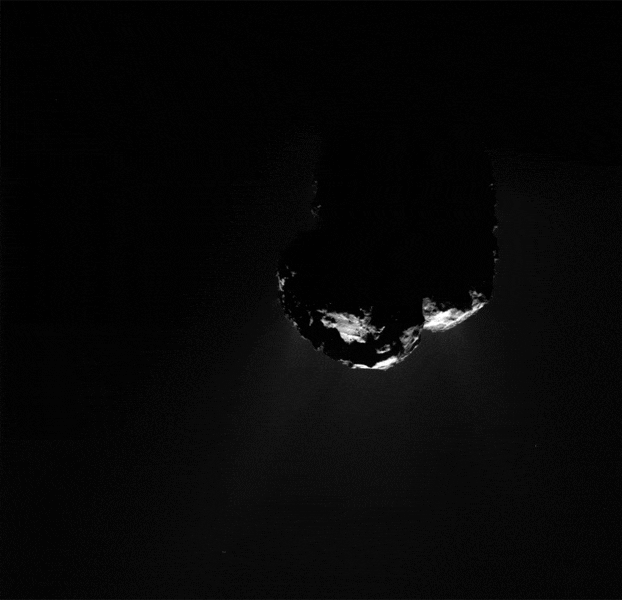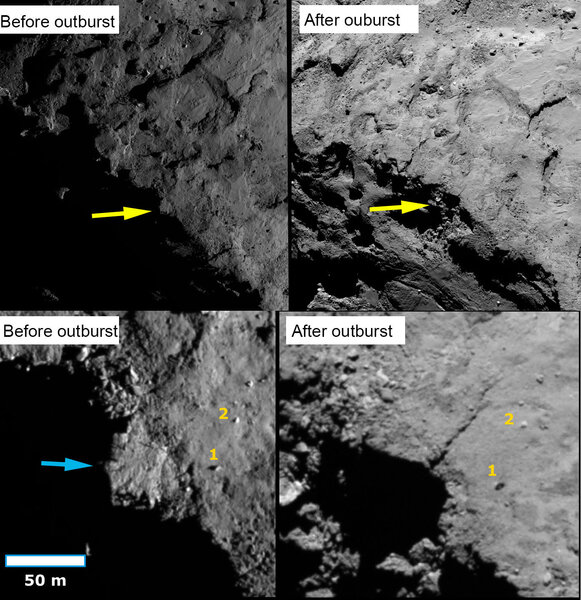Create a free profile to get unlimited access to exclusive videos, sweepstakes, and more!
What's shakin', 67P? Cliff collapses and bouncing boulders on a comet
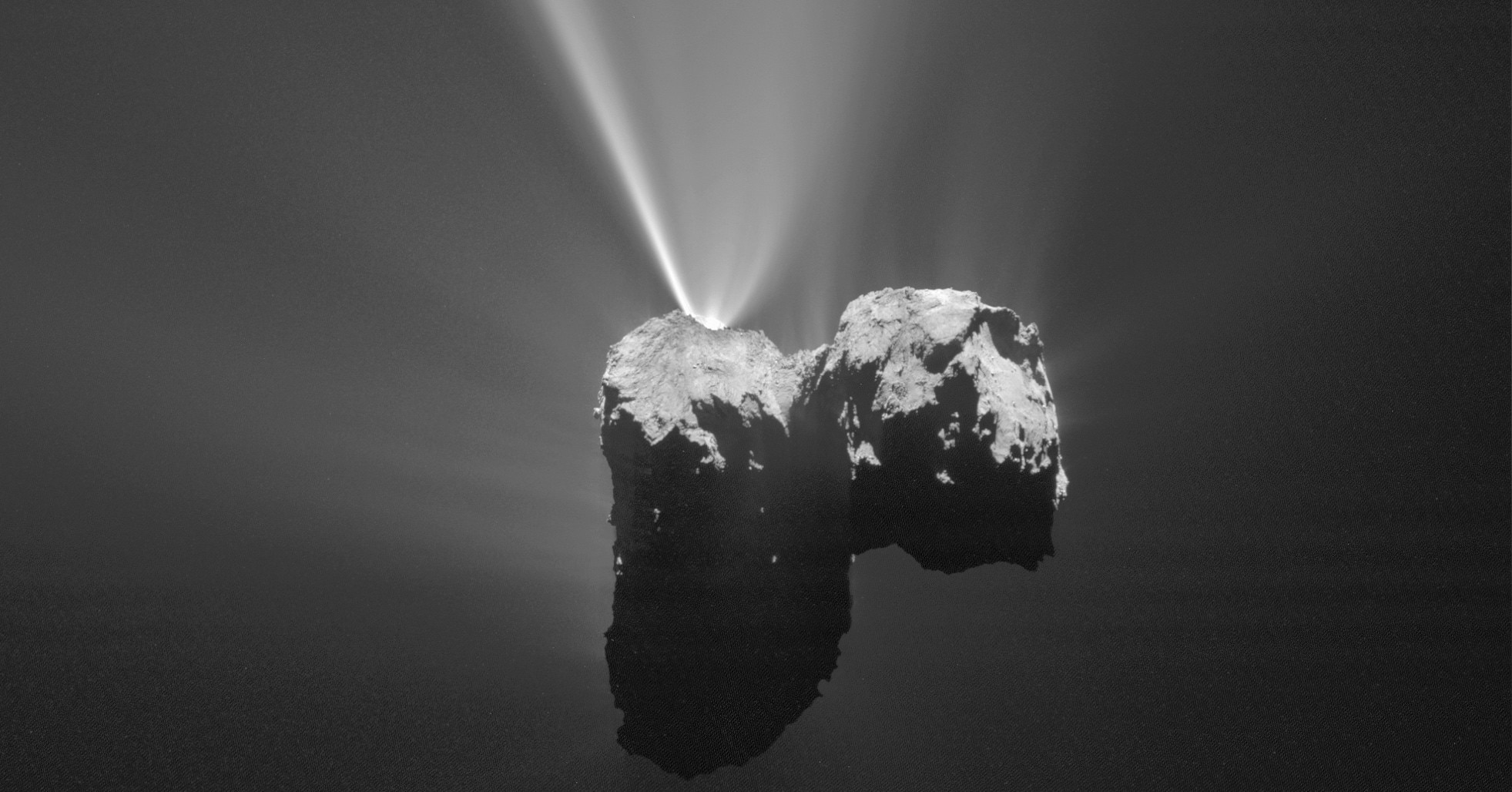
On September 30, 2016 — just three years ago — the phenomenal and phenomenally successful Rosetta mission came to an end. The spacecraft had orbited the comet 67/P Churyumov-Gerasimenko (or 67P for short) for over two years, taking over 100,000 images and far more measurements of the comet and its environment. It even sent a lander, called Philae, down to the surface, with mixed results.
Even though Rosetta itself gently soft-landed on the surface of 67P and shut down over a thousand days ago, it takes time to look over that many images, analyze them, and present the results to other scientists. I knew even back then we'd be seeing interesting things from this mission for a long time to come, and sure enough, new results are starting to come in.
One of the most important things to look for, and in fact one of the major mission goals, is changes in the comet over time. A comet is a big lump of rock, gravel, and dust embedded in various kinds of ices, and as it nears the Sun the warmth turns the ice on and just under the surface into gas. This then blows into space (usually from a vent in the surface, which generates gorgeous fans and jets of material), taking lots of dust and rocks with it. The change in thermal conditions also disrupts the comet's structure, especially when cliffs and overhangs cemented by ice suddenly give way. All sorts of fun things happen then.
And that's why Rosetta's mission was to track 67P as it neared the Sun. This paid off, as newly analyzed images show a house-sized boulder that bounced across the surface, and a massive chunk of cliff collapsing!
First, the boulder. Big ones dot the surface of the comet, probably made during collapse events when more solid structures crumbled. Images taken over time show various ones being dislodged, buried, or uncovered as the comet undergoes changes as it orbits the Sun.
As you may recall, 67P has an overall bi-lobed shape, looking like a cosmic rubber ducky. At the neck joining the two massive halves scientists spotted a large boulder, something like 10 meters across, which was not there in previous images. It had likely dislodged from a nearby 50-meter-tall cliff, hit the surface, and bounced a few times before coming to rest. You can see this in the before-and-after inset in the image above, taken roughly a year apart (on March 17, 2015 and June 19, 2016); the area is smooth and has a few boulders on it in the first shot, but then the big one appears with other landslide debris in the later one.
An extreme close-up shows indentations in the surface where the boulder bounced in the low gravity after it fell. A rock that big on Earth would weigh upwards of several hundred tons, but on the comet's feeble gravity it only weighs about a hundred-thousandth of it. Still, it was enough to compress the surface a bit as it bounced.
This sort of thing is actually more than just a cool picture! The size, shape, and depth of those indentations can tell scientists a lot about the nature of the surface. Comets are low-density and tend to be crumbly, with very little structural strength. But is the surface dusty, rocky, icy? And how strong is the material there; if it's icy is it like sheet ice or fluffy snow?
For example, when the Philae lander bounced on the surface, scientists were able to figure out the surface had a compressive strength (ability to withstand crushing) that was incredibly low: about 0.001 times that of Styrofoam! Crush some Styrofoam in your hand and imagine a substance so gossamer that it can only withstand 1 tenth of a percent of the force you applied. Comets are fragile things.
… and some of the material is in a precarious spot. On September 12, 2015, there was an outburst from the comet. Vents release material when warmed, spewing them out into space, but sometimes there is a sudden and huge increase in outflow. These are typically not from vents, but indicate something catastrophic happened.
In this case, the outburst came from the equator of the smaller comet lobe, between two regions named Maftet (in the north) and Wosret (in the south). Before-and-after images show that a region of a cliff covering 2,000 square meters — about 40x50 meters in dimension — collapsed, likely triggering the outburst. This was one of the largest cliff collapses seen during the mission.
This happened about a month after perihelion, the closest approach of the comet to the Sun. At that time, the southern part of the smaller lobe was getting a lot more light and heat, increasing erosion and more activity. The edge of the scarp (the top of the cliff face) was intact as late as May 2015, but was gone in June 2016, receding back nearly 50 meters.
Examining the talus (the rock and smaller bits that accumulate at the foot of a cliff as collapses occur), the scientists concluded that several of these “mass wasting” events have occurred, and that the differing sizes of blocks of material there show that the structural strength of the cliff is different in different places or that different mechanisms are causing collapses. We don't really know how comets are put together, and what they're like on the inside, so investigations like this really help move understanding forward. There are different ideas about why the comet even has two lobes, different ideas on how it formed this way. It's possible that examining collapse events could help figure out which of the hypotheses is most likely right.
67P is small, as comets go, just a few kilometers from end to end. Despite that, there's a lot left to learn about it, and from there to understanding all these icy visitors better. Stay tuned. There's lots more to come.
